
The Ural Mountains or simply the Urals, are a mountain range that runs approximately from north to south through western Russia, from the coast of the Arctic Ocean to the river Ural and northwestern Kazakhstan. The mountain range forms part of the conventional boundary between the regions of Europe and Asia. Vaygach Island and the islands of Novaya Zemlya form a further continuation of the chain to the north into the Arctic Ocean.

Yekaterinburg, alternatively romanized Ekaterinburg, formerly known as Sverdlovsk, is the largest city and the administrative centre of Sverdlovsk Oblast and the Ural Federal District, Russia. The city is located on the Iset River between the Volga-Ural region and Siberia, with a population of roughly 1.5 million residents, up to 2.2 million residents in the urban agglomeration. Yekaterinburg is the fourth-largest city in Russia, and the largest city in the Ural Federal District, as well as one of the main cultural and industrial centres of Russia. Yekaterinburg has been dubbed the "Third capital of Russia", as it is ranked third by the size of economy, culture, transportation and tourism.

Perm, previously known as Yagoshikha (Ягошиха) (1723–1781), and Molotov (Молотов) (1940–1957), is the largest city and the administrative centre of Perm Krai, Russia. The city is located on the banks of the Kama River, near the Ural Mountains, covering an area of 799.68 square kilometres, with a population of over 1 million residents. Perm is the fourteenth-largest city in Russia, and the fifth-largest city in the Volga Federal District.

Sverdlovsk Oblast is a federal subject of Russia located in the Ural Federal District. Its administrative center is the city of Yekaterinburg, formerly known as Sverdlovsk. Its population is 4,297,747.
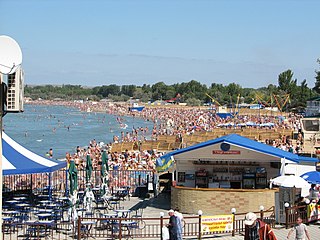
Anapa is a town in Krasnodar Krai, Russia, located on the northern coast of the Black Sea near the Sea of Azov. Population: 88,879, 58,990 (2010 Census); 53,493 (2002 Census); 54,796 (1989 Census).
The 5th Army of VVS and PVO was the Russian Air Force's smallest Air Army, with the headquarters located in Yekaterinburg. Its zone of responsibility was the Volga-Ural Military District, on the border between Europe and Asia. The commanding officer of the 5th Air Army was from May 2006, Lieutenant-General Vadim Volkovitskiy.

Fyodor Nikolayevich Panayev was a Russian teacher and climatologist, the author of a number of books on climatology and one of the founders of Perm Zoo.

Vladimir Vyacheslavovich Khozin is a Russian professional footballer who plays as a right-back for FC Chayka Peschanokopskoye.

The Ekaterinburg Arena, officially Central Stadium, is a football stadium in the city of Yekaterinburg in Russia. It is the home ground of Russian Premier League and the country's oldest football club FC Ural Yekaterinburg. The capacity of the stadium is just over 35,000, and might be reduced to 25,000 after the 2023 Summer Universiade. It is one of 12 venues in 11 host cities for the 2018 FIFA World Cup in Russia. The stadium is the easternmost among the 2018 World Cup venues.

Perm-36 was a Soviet corrective labor colony located near the village of Kuchino, 100 km (60 miles) northeast of the city of Perm in Russia. It was part of the large prison camp system established by the former Soviet Union during the Stalin era, known as the Gulag. Since 1972 the camp was designated a 'special regime' camp used exclusively for the incarceration of "especially dangerous state criminals", mostly Soviet dissidents.
The Bataysk Museum of History is a historical museum in Bataysk, Rostov Region. The modern building of the museum is located in culture and recreation park of the city in the Kirov street, 51a.
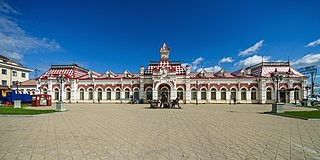
The old station building is an edifice in the Zheleznodorozhny District of Yekaterinburg, Russia. The house is located at 14 Vokzalnaya Street It was a main station building between 1878 and 1914. The building was designed in the Russian Revival style. It is recognized as a historical landmark, has official status as an object of Russian cultural heritage, and contains the museum of History & Engineering science of the Sverdlovsk Railway.

Taganrog State Literary and Historical and Architectural Museum-Reserve is an association on the basis of literary and local history museums.

The Nizhny Tagil Museum of Regional History is the oldest museum in Nizhny Tagil. It is located in the centre of the city, near the Tagil pond, at Lenin Prospekt. The museum belongs to the Nizhny Tagil Museum Reserve "Metallurgical Ural". Furthermore, it is located in the building of the former laboratory outbuilding at the Zavodskaya office. Together with the City Council, it forms the architectural complex called the "Tagil Kremlin".
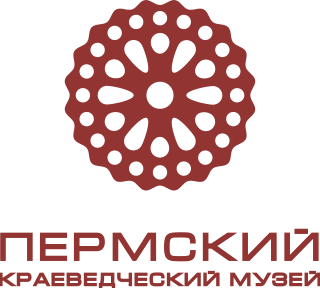
The Perm Regional Museum, also known as the Perm Museum of Local Lore, is a museum located in Perm, Perm Krai, Russia. Founded in 1890, the museum is the oldest and largest museum in Perm. The museum maintains a number of permanent and temporary exhibitions and is a tourist attraction.
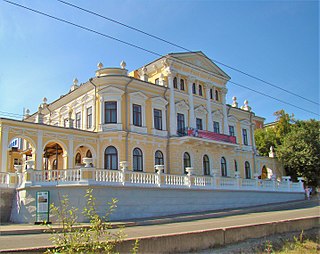
The Meshkov Mansion, also known as the Meshkov House, is a historic building in Perm, Perm Krai, Russia. Built between 1887 and 1889, the building served a number of roles through its history. The mansion is currently occupied by the Perm Regional Museum's main branch.

The Sverdlovsk Regional Museum of Local Lore is a museum in Yekaterinburg, Sverdlovsk Oblast, Russia. The museum is one of the oldest in Yekaterinburg, having been founded in 1870. In addition the main branch of the museum, the institution manages several other museums in the region.

Chertovo Gorodishche, more commonly known as Devil's Settlement, Devil's Mound, or Devil's City, is a rock formation near Yekaterinburg in Sverdlovsk Oblast, Ural Federal District, Russia. Made from several types of rock, the formation is a tourist attraction and archeological site.
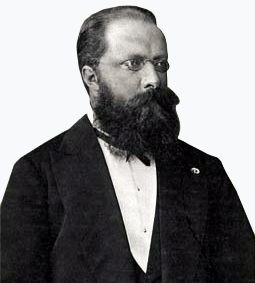
Onésime Yegorowitsch Claire, also George Onésime Clerc, was a Russian naturalist of Swiss origin.

The Vladimir K. Arseniev Museum of Far East History is a museum named after the explorer, Vladimir Arseniev, in the city of Vladivostok in the Russian Far East. The museum's collections focus on the history of Vladivostok and the surrounding area in Primorsky Krai. The Vladimir K. Arseniev Museum of Far East History also manages the museum facilities at Vladivostok Fortress.


















